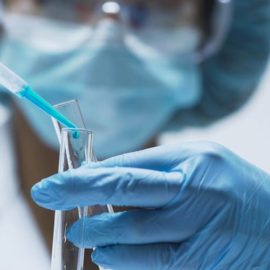The concept of resetting circadian rhythms gained popularity at the time of the discoveries around the molecular mechanisms controlling the circadian rhythm, which were granted the 2017 Nobel Prize. Today, in an age in which consumers of beauty and wellness products are increasingly informed, a rise in the focus on resetting circadian rhythms comes as no surprise.
The idea behind resetting circadian rhythms refers to the ability to adjust or synchronize the body’s internal biological clock (what are known as circadian rhythms) with external cues. For instance, these might include having control over light and darkness exposure, in order to maintain a regular sleep-wake cycle and its physiological consequences. As we’ll see across this article and as shown by recent research, resetting circadian rhythms might be at the center of many crucial health aspects which can be encompassed as part of the holistic approach to beauty and wellness that consumers are demanding today.
This alignment is directly linked to consumers’ growing intentions to prioritize self-care for themselves in a post pandemic world: while in 2015, just 12% of consumers made this a priority, this figure rose to 24% in 2021, according to figures published by Euromonitor Global Consumer Trends 2022 . In light of these drastic changes, a context which has been labelled as the Great Life Reset, the concept of resetting circadian rhythm intersects with a new approach towards wellness and beauty that cosmetic brands are embracing.
Content
What is resetting circadian rhythms and why is it important
Circadian rhythms are natural cycles (of approximately 24 hours) in charge of regulating various physiological and behavioural functions including sleep patterns, hormone production, and metabolism, among others. These rhythms respond to certain external cues (for instance, exposure to natural light), transforming them into signals for certain body processes.
One of the most well-known consequences of circadian rhythms is precisely the one related to sleep/wake patterns. As such, light (particularly natural or bright light) perceived by the eyes stimulates a type of specialized cell called melanopsin, which in turn sends signals to a particular brain region to adjust the body’s internal clock. This means that exposure to bright light in the morning can help advance the circadian clock, making a person feel more alert and promoting an earlier bedtime. And vice versa: exposure to bright light (including the blue light released by digital screens) in the evening can delay the circadian clock, leading to a later bedtime and potentially causing difficulties falling asleep.
Resetting circadian rhythms is achieved through synchronizing these rhythms with adequate external cues. This can be particularly crucial for alleviating sleep disorders, but the ways of resetting circadian rhythms in healthcare and beauty goes further than that.
What is the role of resetting circadian rhythms in holistic beauty
As explained above, circadian rhythms are primarily controlled by an area in the brain called the suprachiasmatic nucleus (SCN), located within the hypothalamus. However, additional research has shown the presence of peripheral circadian clocks as part of the epidermis (Matsunaga, N.,et al. 2014). This mechanism has been found to play a part in important skin operations related to antioxidant and regenerative processes, including:
- Regenerative metabolism processes
- Cell proliferation and division taking place during nighttime
- Keratinocyte differentiation in repairing the skin’s barrier properties
By resetting epidermal circadian rhythms, new active ingredients present a revolutionary potential for an integral and holistic treatment targeting well-aging beauty through well-known internal body mechanisms.
It’s precisely in this context where Circanblue™ can thrive, a postbiotic solution that aims at resetting circadian rhythms for skin well-aging by inducing an epidermal resynchronisation.
In fact, Circanblue™ has shown in vitro efficacy to revert biorhythm desynchronization in overexposure to blue light, restoring gene expression in CLOCK and CRY1 genes, the two main circadian genes, as well as other circadian-related proteins.
Just like a good night of sleep, Circanblue™ is able to counter the nocive effects of blue light emitted by screens in today’s digital culture, as well as significantly improve several repairing and detoxifying systems of our skin. Additionally, with its probiotic, natural origin, the postbiotic ingredient taps into consumers’ current preferences for innovative natural ingredients with scientifically-backed claims and targets.
No comments yet
There are no comments on this post yet.





Leave a comment